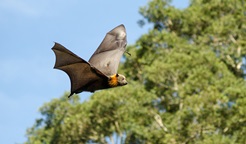Rainforest walk
Coramba Nature Reserve
Learn more
Learn more about why this park is special
Rainforest walk is in Coramba Nature Reserve. Here are just some of the reasons why this park is special:
Aboriginal culture

The reserve's name is taken from the name of the nearby town of Coramba, which is in turn derived from the local Aboriginal Gumbaynggirr name for mountain. The land has once served as a fringe dwelling site and meeting place for the Gumbaynggirr people.
Interesting wildlife

The reserve is the only patch of lowland subtropical rainforest in the Clarence Valley that features white booyong, along with other flood-tolerant species, such as pepperberry, giant stinging tree, and one of the best stands of turnip wood in the area.
- Rainforest walk Rainforest walk in Coramba Nature Reserve, near Coffs Harbour, is a great place to take a delightful stroll and enjoy birdwatching through a rare protected rainforest.
Protected rainforest

The reserve, though small, is an important ecological community, as it is one of only a very few remaining stands of lowland rainforest along Orara River and is listed as endangered under the Threatened Species Conservation (TSC) Act. A successful rainforest regeneration program has been carried out to protect the reserve's natural resources.
- Rainforest walk Rainforest walk in Coramba Nature Reserve, near Coffs Harbour, is a great place to take a delightful stroll and enjoy birdwatching through a rare protected rainforest.
Plants and animals protected in this park
Animals
-

Long-nosed bandicoot (Perameles nasuta)
A nocturnal marsupial and one of the smaller Australian native animals, the long-nosed bandicoot is found across eastern Australia. Populations in the Sydney region have dwindled since European settlement, leaving only endangered colonies in inner western Sydney and at North Head, near Manly. The long-nosed bandicoot has grey-brown fur and a pointed snout which it uses to forage for worms and insects.
-

Grey-headed flying-fox (Pteropus poliocephalus)
The grey-headed flying fox is Australia's largest native bat, with a wingspan up to 1m. This threatened species travels up and down south-eastern Australia and plays a vital role in pollinating plants and spreading seeds in our native forests.
Look out for...
Grey-headed flying-fox
Pteropus poliocephalus

The grey-headed flying fox is Australia's largest native bat, with a wingspan up to 1m. This threatened species travels up and down south-eastern Australia and plays a vital role in pollinating plants and spreading seeds in our native forests.
